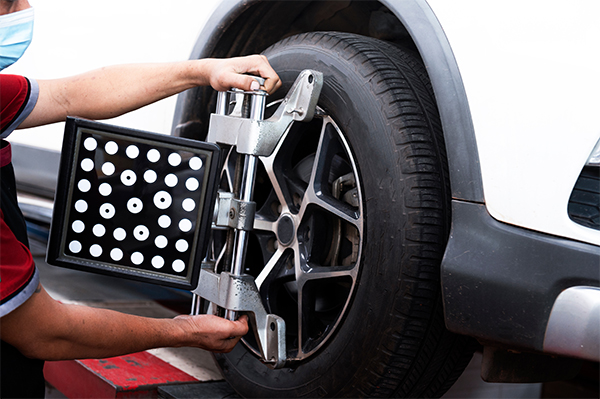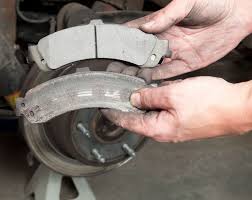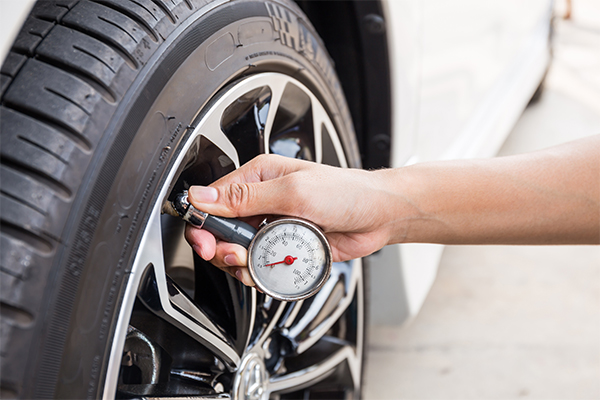Posted on 10/13/2025

An improper wheel alignment will definitely shorten your vehicles tire life, causes more wear to steering components and can be a safety hazard if the alignment is bad enough by causing "pulling" to one side. If it pulls to the left you could drift into oncoming traffic. A vehicles suspension and steering alignment are usually knocked out of specification by roadway potholes, accidents, or worn suspension parts. These issues can cause many problems which can lead to a crooked steering wheel, vibrations, and early tire wear which leads to costly replacements. It is a standard practice in our shop to do an alignment after installing new tires. We want to get the alignment right and make sure you get the best wear and longest life from the new tires. One important thing to remember is that a wheel alignment’s purpose is to align of all the suspension and steering components that set the wheels into the manufacturers’ specified positions. An alignment affects the f ... read more
Posted on 8/11/2025
.jpg)
If you will be driving your current vehicle, you can start with pre trip services like If you plan on driving your car on a trip anytime soon, it would be wise to spend some money getting it is ready for the trip. Our articles mention regular maintenance often because it helps extend the life of the vehicle, prevent headaches and problems, and in the long run it will cost you less. Perform the needed maintenance two weeks before the trip to make sure there are no issues after the services so you can have a more enjoyable, stress free vacation. You wont need to fret over breakdowns, thusly easing your tension and making the trip more enjoyable. Makes sense right? To avoid breakdowns and get your car ready. Here are some things you can do to prepare your vehicle for your trip. Before the your trip, you should take some time to evaluate your vehicle’s overall condition. Do you even trust that your vehicle can make a long trip? You may want to rethink things ... read more
Posted on 7/16/2025
.jpg)
So you’ve had your car for a few years and feel like you want to upgrade. That understandable, I think we all experience that feeling. Maybe your family size has changed, and it’s time to get a larger or smaller vehicle. Do you want a compact car or a SUV? Maybe you saved a little money and want a muscle car. Whatever the reason, purchasing a new car is a big investment and for many people; it can represent a financial decision that may impact the next several years of their lives. Most people buy their cars at a dealership, and if you do, here are a few tips for your test drive. Listen, listen, and listen. You should be listening for ANY unusual noises. Don’t let a salesman blow off your concerns. Always follow your first instinct. When you are sitting in the vehicle at the dealership, test everything. heated and power seats, power mirrors, sun visor lights...etc. Anything and everything needs to be working before you drive off the lot. Let ... read more
Posted on 6/16/2025

A squeak that your brakes make when you first drive your car in the morning could be the result of moisture and/or dirt that collects on the rotors, including from condensation caused by high humidity. Under these circumstances the squeak should go away after a short period of driving and applying the brakes a few times. Simple. If you notice that the noise is not going away or you hear nonstop squeaking while you’re driving, the cause may be more serious and should be checked out right away by a trusted auto shop like One Stop Automotive to avoid higher repair costs. Nonstop squealing while you drive is probably the sound of the brake pad wear indicator (squealer) letting you know it’s time for new brakes. When the braking material on the brake pads gets too thin, the "squealers" rub on the brake rotors. This makes the squealing or squeaking noise that you hear. Some cars have electronic brake pad wear sensors, but most have the squealers. Duri ... read more
Posted on 6/3/2025

Keep Your Tires Properly Inflated To keep your tires from unnecessary wear and tear and even blow-outs, it is very important to keep them properly inflated. Properly inflated tires can also help with your gas mileage. When tires are filled to specifications, they also run cooler, reducing the possibility of a blowout. You should always keep a good quality tire gauge in your vehicle. You can get a cheap one, but they tend to break after a few uses. It is best to check tire pressure before you drive anywhere so the tires are cool. This is the required method because tires heat up as you drive, which will keep you from getting an accurate reading. There is a sticker inside the driver’s door jamb that gives tire size and pressure information. Use this guide when checking tire pressures. Take of the valve stem caps and press the tire gauge to the valve stem. This will give you the tire’s pressure. If it’s low, add some air. If it’s high, let som ... read more